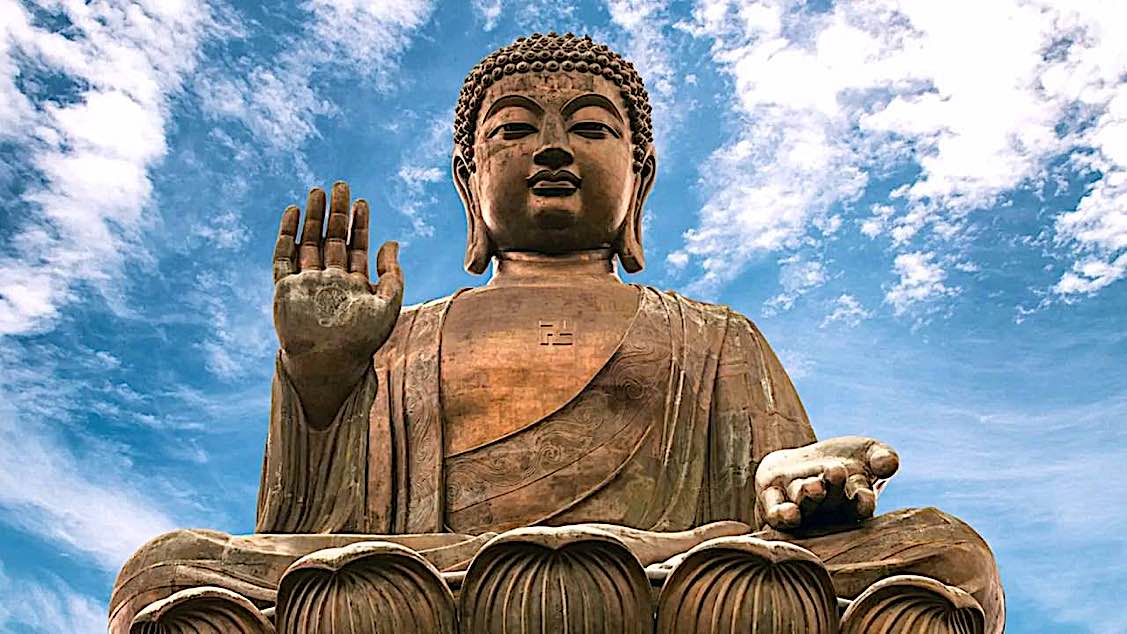A new student of the Buddha asked him once if the path of enlightenment can be described in a way where there is gradual progress, much like other professions where one progress through skill levels to eventually become proficient.
As the Buddha shares in this teaching, the whole of the path is one in which there is gradual training, gradual practice and gradual progress.
The sequential training steps that the Buddha guides a new student joining in his tradition are:
- Practice of moral conduct: The Buddha provides guidance to the household practitioners to implement the five precepts (eight precepts for the ordained practitioners).
‘Come, mendicant, be ethical and restrained in the monastic code, conducting yourself well and seeking alms in suitable places. Seeing danger in the slightest fault, keep the rules you’ve undertaken.’
Guide on cultivation of ethics for a lay practitioner (from DN 31)
- Practice of sense restraint: The Buddha advises to guarding the sense-doors.
When they have ethical conduct, the Realized One guides them further: ‘Come, mendicant, guard your sense doors. When you see a sight with your eyes, don’t get caught up in the features and details. If the faculty of sight were left unrestrained, bad unskillful qualities of covetousness and displeasure would become overwhelming. For this reason, practice restraint, protect the faculty of sight, and achieve restraint over it. When you hear a sound with your ears … When you smell an odor with your nose … When you taste a flavor with your tongue … When you feel a touch with your body … When you know an idea with your mind, don’t get caught up in the features and details. If the faculty of mind were left unrestrained, bad unskillful qualities of covetousness and displeasure would become overwhelming. For this reason, practice restraint, protect the faculty of mind, and achieve its restraint.’
- Eating in moderation: The Buddha advises to eat only to nourish the body, not for taking delight, and not in excess.
He advises against eating food to comfort difficult emotions.When they guard their sense doors, the Realized One guides them further: ‘Come, mendicant, eat in moderation. Reflect rationally on the food that you eat: ‘Not for fun, indulgence, adornment, or decoration, but only to sustain this body, to avoid harm, and to support spiritual practice. In this way, I shall put an end to old discomfort and not give rise to new discomfort, and I will live blamelessly and at ease.’
- Be committed to wakefulness: The Buddha then advises the student to practise wakefulness of the mind. He recommends on a combined practise of walking, sitting meditation along with lying down in the lion’s posture in the night.
When they eat in moderation, the Realized One guides them further: ‘Come, mendicant, be committed to wakefulness. Practice walking and sitting meditation by day, purifying your mind from obstacles. In the evening, continue to practice walking and sitting meditation. In the middle of the night, lie down in the lion’s posture—on the right side, placing one foot on top of the other—mindful and aware, and focused on the time of getting up. In the last part of the night, get up and continue to practice walking and sitting meditation, purifying your mind from obstacles.’
- Be committed to situational awareness: The Buddha then advises the student to train the awareness of mind.
When they are committed to wakefulness, the Realized One guides them further: ‘Come, mendicant, have mindfulness and situational awareness. Act with situational awareness when going out and coming back; when looking ahead and aside; when bending and extending the limbs; when bearing the outer robe, bowl and robes; when eating, drinking, chewing, and tasting; when urinating and defecating; when walking, standing, sitting, sleeping, waking, speaking, and keeping silent.’
- Cultivation of samadhis, absorptions, jhanas: The Buddha then advises the students to practise cultivation of the absorptions by going into seclusion.
When they have mindfulness and situational awareness, the Realized One guides them further: ‘Come, mendicant, frequent a secluded lodging—a wilderness, the root of a tree, a hill, a ravine, a mountain cave, a charnel ground, a forest, the open air, a heap of straw.’ And they do so.Here, he then further advises them on how to give up the five hindrances and attain to the jhanas, and then attain to the states of enlightenment.
Notice the guidance of the Buddha is on doing one thing-at-a-time. Modern research shows that a continued practise of a new habit for 25 days to be effective in creating a reflexive memory of it, and also that building of new habits should be practised one at a time. Read more on the science of habits ↗️
Also notice that the Buddha doesn’t ask for perfection. As cultivation of each subsequent state also purifies the previous steps. So one needs to implement each step to the best of their ability while seeking guidance from a teacher as required. There is a positive reinforcement cycle that one should observe in the condition of mind being improved all the time as they practise the teachings of the Buddha.
The Buddha advises a balance of dedicated effort while also staying relaxed, an analogy he gives through how the strings of lute should be neither too tight nor too lose for playing good music. In the same way, mind is best trained by maintaining a balance of energy and relaxation (excess leads to restlessness, and too little leads to laziness).
You can read the full teaching over here: https://suttacentral.net/mn107


Thanks for posting! 🙏 It was just what I needed to read today
You’re welcome, glad to hear it was of help 😀
Lmao I got downvoted 🤣